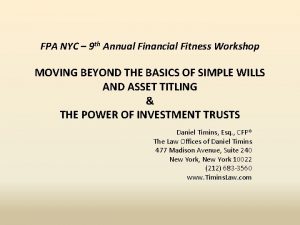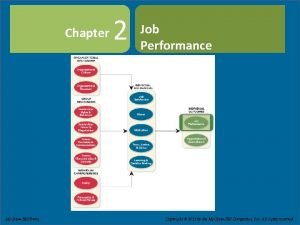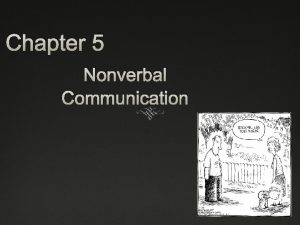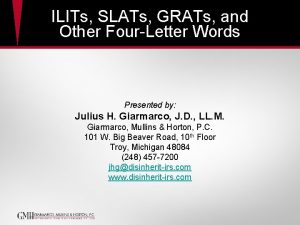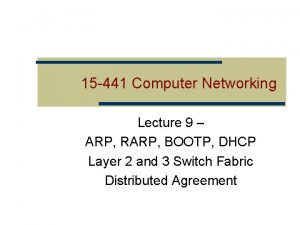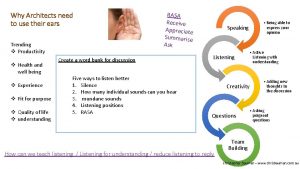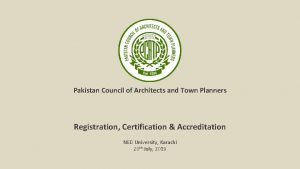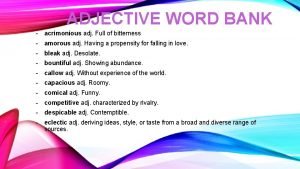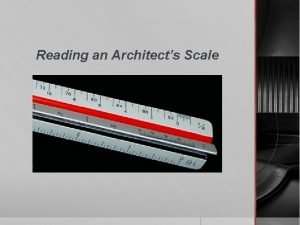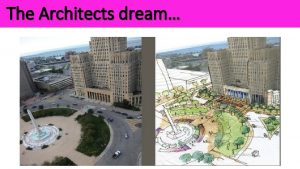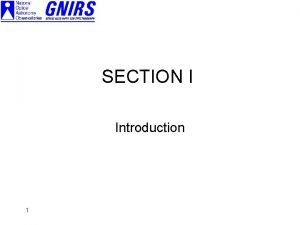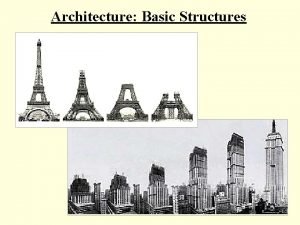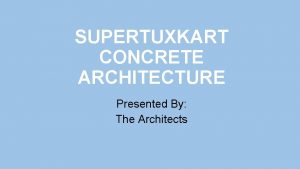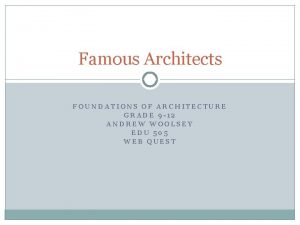Maths in Architecture Introduction q Architects intentionally or



















- Slides: 19

Maths in Architecture

Introduction q Architects intentionally or accidentally use mathematical proportions to shape buildings. q In ancient Greece, the golden ratio (a+b is to a as a is to b) may have been used to lay out some buildings. q In Islamic architecture, geometrical shapes and tiling patterns are used. q Hindu temples may have been laid out using the mathematics of astrology; they also have a fractal-like structure where parts resemble the whole. q In Renaissance architecture, symmetry and mathematical proportion were deliberately emphasized.

Ancient Greece q In Greek architecture, the golden rectangle (also known as Phi, the golden section, golden ratio, or golden mean), served as a canon for planning architectural designs. q Knowledge of the golden mean goes back at least as far as 300 BC. q The golden rectangle's short and long sides are in the ratio 1: 1. 618, considered pleasing in Western architectural theory. q The Cartesian grid plan (a type of plan which specifies each point uniquely in a plane by a pair of numerical coordinates) of cities such as ancient Greek Olynthus shows another association between architecture and geometry.

Islamic Architecture q In Islamic architecture, a proportion of 1: √ 2 was often used — the plan was a square and the elevation was obtained by projecting from the diagonal of the plan. q The dimensions of the various horizontal components of the elevation such as mouldings and cornices were obtained from the diagonals of the various projections and recesses in plan. q Islamic buildings are often decorated with tiling patterns which typically make use of several mathematical tessellations.

Egyptian- Hindu Architecture q Ancient architectures in Egypt and India employed planning principles and proportions that rooted the buildings to the cosmos, considering the movements of sun, stars, and other heavenly bodies. q Vaastu Shastra, the ancient Indian canons of architecture and town planning employs mathematical drawings called mandalas. q Complex calculations are used to arrive at the dimensions of a building and its components. q Some of these calculations were astrological, while others were based on aesthetics such as rhythm.

Renaissance Architecture q Renaissance architecture used symmetry as a guiding principle. The works of Andrea Palladio serve as good examples. q Later High Renaissance or Baroque used curved and dramatically twisted shapes in as varied contexts such as rooms, columns, staircases and squares.

th 20. Century Architecture q The early twentieth century movement Modern Architecture used rectilinear Euclidean (also called Cartesian) geometry. q The architectural form consists of putting these two directional tendencies together, using roof planes, wall planes and balconies, which either slide past or intersect each other. q The goals of architecture include aesthetics, philosophy and meaning as well as function. Architecture uses the beauty and structure of mathematics to achieve these goals.

Some examples of Architecture Inspired by Maths

Mobius Strip Temple This temple is inspired by the Mobius Strip geometry (a continuous closed surface with only one side; formed from a rectangular strip by rotating one end 180 degrees and joining it with the other end).

Tetrahedral- Shaped Church This church is made keeping in mind the tetrahedron (a convex polyhedron with four triangular faces). It’s a striking and classic example of modernist architecture, with its row of 17 spires and massive tetrahedron frame that stretches more than 150 feet into the sky.

Pentagonal, Phyllotactic & Education Center This architectural structure is composed of geodesic domes that are made up of hexagonal and pentagonal cells.

Gherkin Skyscraper Standing 591 -feet tall, with 41 floors, this modern tower was carefully constructed with the help of parametric modeling amongst other math-savvy formulas so the architects could predict how to minimize whirlwinds around its base.

Philips Math-Music Pavilion This crazy architecture is constructed of asymmetric hyperbolic paraboloids (a quadric curve) and steel tension cables. Philips Electronics Company wanted to create a unique experience for visitors, so they collaborated with an international group of renown architects, artists, and composers to create the experimental space.

Integral House This home’s owner Jim Stewart was a calculus professor who wrote textbooks and wanted to incorporate the mathematical sign into the home’s name (Integral. Calculus) and design. It cost him a whopping $24 million to build such a house.

Solar Algorithm Wizardry This building used mathematical algorithms to alter the cubic building’s geometry, based on solar inclination and the structure’s proposed orientation. Algorithms can be used to create the perfect building for any location with the right computer program.

Cube Village As seen in the picture this village comprises of cubic structures on top of the houses. Designed by Dutch architect Piet Blom these houses are built to mimic an abstract forest.

Magic Square Cathedral This construction designed by Antoni Gaudí is a mathematician’s dream. It features hyperbolic paraboloid (a quadric curve) throughout.

Fractal Gas Station This structure is entirely made up of fractals (a fragmented geometric shape that is split into several parts). The mirrored facade beautifies ninety solar panels that power the station.

Made by – Abhishek Mishra Special Thanks To Bhavesh Patidar
 Intentionally defective grantor trust
Intentionally defective grantor trust Employee behaviors that intentionally hinder organizations
Employee behaviors that intentionally hinder organizations Estate planning meaning
Estate planning meaning Functional professional touch
Functional professional touch Grats
Grats Reverse arp
Reverse arp Perplex sliding
Perplex sliding Architect act 1967
Architect act 1967 Why architects need to use their ears
Why architects need to use their ears Ravi and minu architects
Ravi and minu architects Media production architects
Media production architects Pakistan council of architects and town planners
Pakistan council of architects and town planners Jay da silva
Jay da silva Chicago data lake companies
Chicago data lake companies Kph architects
Kph architects Association of enterprise architects
Association of enterprise architects The behavioural architects
The behavioural architects Csda architects
Csda architects Descriptive word bank
Descriptive word bank How to read 1/8 scale
How to read 1/8 scale
